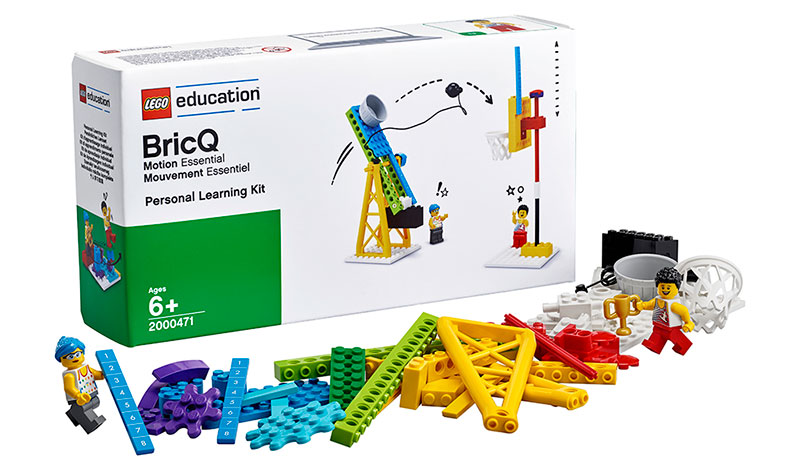Exploring Push and Pull Forces with LEGO® Education BricQ Motion Essential Set
In this lesson, children of 6+ years will create an exciting obstacle course for dogs using the LEGO® Education BricQ Motion Essential Set. They will explore the concepts of push and pull forces while building and testing the obstacle courses. The vision is to let students know about forces and enhance their understanding of the Lego set in a fun and engaging way.
Step 1: Preparatory Session (10 Minutes)
- Show the students a video about dogs and engage them in a discussion about different training obstacles for dogs. Agility training is important for dogs to keep fit and increase their stamina. The different obstacles used for this purpose are; tunnels, hurdles, see-saws, and hoops, amongst others.
- The next step is for the teacher to initiate a discussion by asking questions like: “How do you train a dog?”. Put the student’s observation skills to the test and recollect the names of obstacles they witness in the video. Students can even say a story about their imaginary dog friend and how he managed to cross every obstacle with finesse.
- The hands-on task for the project is conveyed by the class teacher, where students will be required to build an obstacle course for dogs without specific instructions. However, for help, students can use the picture on page 1 of building instructions book “A” for inspiration that comes with the LEGO® Education BricQ Motion Essential set.
- After dividing the class into teams, allow them time to brainstorm collectively to decide on creating as many as 3 types of obstacles for the dogs. It should be challenging enough for the pet to demonstrate running over, under, or around the obstacle.
Step 2: Exploratory Session (Time: 20 Minutes)
- Students will be paired up for this task and be asked to construct an obstacle course for the dog.
- For reference purposes, the picture on page 2 of the building instructions book “A” is apt to get started with the activity. It provides some inspiration to build a unique obstacle by choosing from as many as 523 Lego pieces that are available at your disposal.
- Once the teams are done with building the obstacles, encourage them to run their dogs (LEGO dogs or toy figurines) through the course to test it out.
Step 3: Discuss (5 Minutes)
- What are the forces that were put to work when the dog jumped over the obstacles? Gather students and discuss further on this topic.
- Ask questions like: “How does the dog move through your obstacle course?”, “Which obstacles require a push?”, and “Which obstacles require pulling?”
- Encourage students to share their examples of push and pull forces that they may have observed during the activity.
Step 4: Elaborate (10 Minutes)
- Reinvent the obstacle course with the LEGO® Education BricQ Motion Essential set and make it more challenging. Ask students to think deeper and design obstacles that were not included in the video. Use different Lego pieces that were not included previously. Let’s see what our little champions come up with!
- Encourage the students to continue inventing and building more obstacles for their courses.
- Students can even combine their obstacles with the ones designed by other groups in class, to create a full arena of obstacle courses. This is an excellent opportunity to communicate, exchange ideas, and take inspiration from each other.
- After the exciting session has concluded, the teacher needs to monitor and ensure that all bricks are placed back into the trays and that the workstations are clean.
Step 5: Evaluate (Ongoing Throughout the Lesson)
- Observe the students’ proficiency in describing the push and pull forces in their obstacle courses.
- Use a scale (1 to 3) to measure their understanding: 1. Needs additional support, 2. Can work independently, 3. Can teach others.
- Evaluation by the teacher reinforces the student’s capabilities and makes them proud of what they have achieved.
Self-Assessment and Peer-Feedback:
- Have each student choose a LEGO brick that represents their understanding: Green (can explain push and pull), Blue (confidently explain push and pull), or Purple (can explain and help others understand push and pull). Self-assessment is a good way to find out one’s strengths and work on their weaknesses.
- In small groups, students can discuss their experiences, using positive feedback and encouraging communication.
Through this lesson, students will learn about push and pull forces while building a fun dog obstacle course using the LEGO® Education BricQ Motion Essential Set. They will be exploring different designs, and gain hands-on experience in problem-solving and teamwork.

